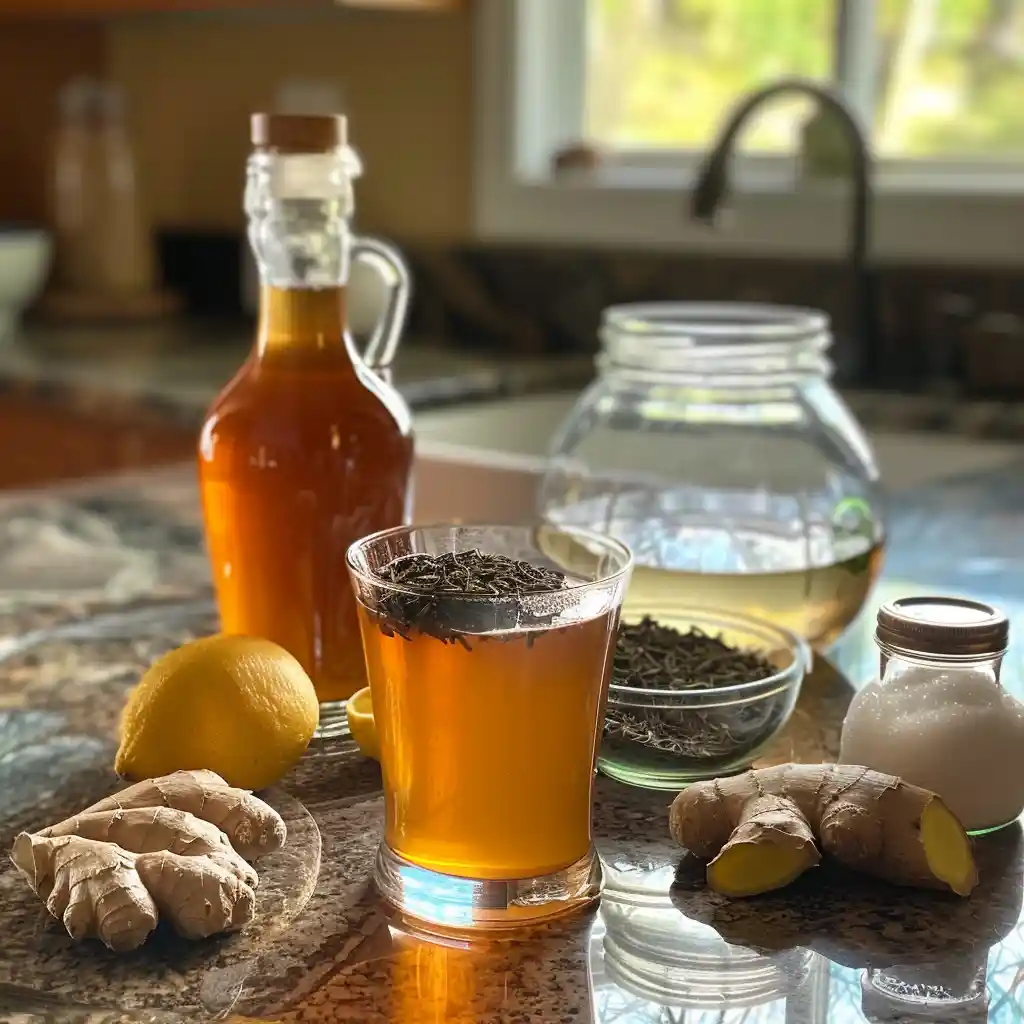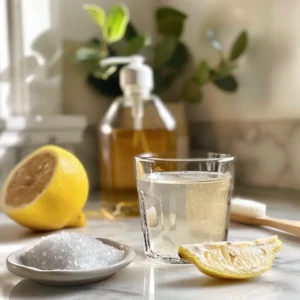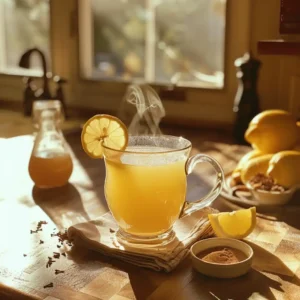Fermented tea isn’t something I grew up with, but it’s become a beautiful discovery that’s rooted in both tradition and transformation. I first stumbled across it while visiting a small herbal market in Chiang Mai, Thailand, where bottles of tangy, fizzy tea lined the stalls. Curious, I grabbed a chilled bottle of kombucha and sipped — tart, slightly sweet, with a bold character that reminded me this wasn’t just a drink; it was alive.
In this article, I’ll take you on a flavorful journey through the world of fermented tea. We’ll dive into what it is, how it’s made, its cultural roots, and why so many people — including me — believe it may support overall well-being. Whether you’ve only heard of kombucha in passing or you’re curious about making your own at home, this guide is packed with everything I’ve learned from researching, brewing, and sipping my way through dozens of tea styles.
We’ll look at the science of fermentation, explore global traditions like pu-erh and jun, and talk about my experience with its digestive effects. I’ll also break down the potential risks, walk you through a homemade recipe or two, and highlight some lesser-known but wonderful fermented drinks I’ve come across.
Looking for inspiration? Try this refreshing fermented probiotic lemonade guide — it was the first drink that made me want to brew my own at home.
Let’s get started with the basics in Part 1: What is Fermented Tea?
Print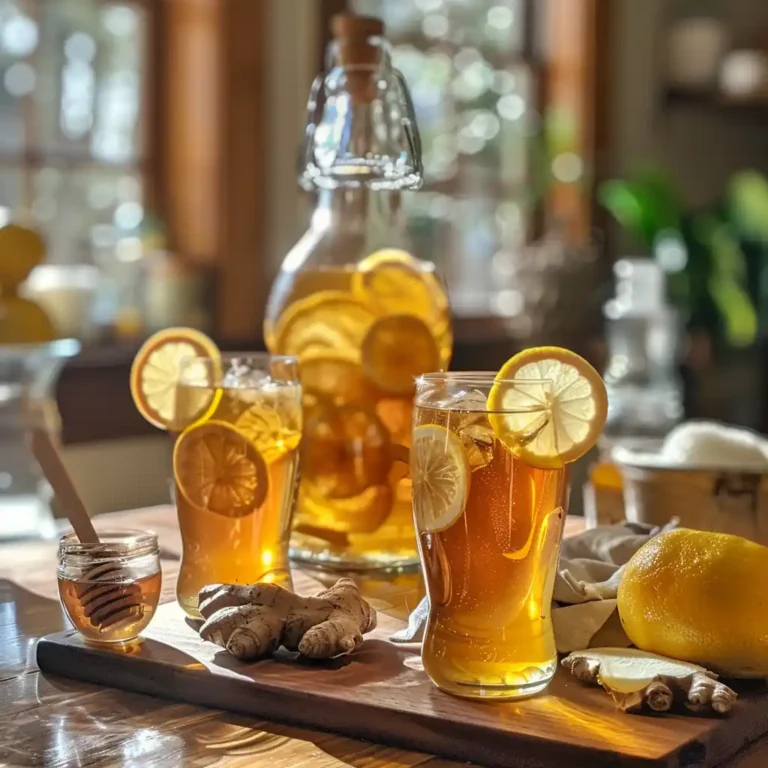
Fermented Tea
A flavorful exploration into the world of fermented tea—discover its history, types, health benefits, and how to make it at home.
- Total Time: 7-10 days
- Yield: 2 liters 1x
Ingredients
- Black, green, or oolong tea
- Sugar
- Filtered water
- SCOBY (Symbiotic Culture Of Bacteria and Yeast)
- Starter tea or previous kombucha batch
- Glass jar
- Breathable cloth and rubber band
Instructions
- Brew a strong pot of tea and dissolve sugar while hot.
- Allow it to cool to room temperature.
- Pour into a clean glass jar and add the SCOBY with starter tea.
- Cover with a breathable cloth and secure with a rubber band.
- Let it ferment for 7–10 days in a warm, dark place.
- Taste every couple of days until desired tanginess is achieved.
- Remove the SCOBY and reserve for future batches.
- Bottle the fermented tea and refrigerate before serving.
Notes
Sanitation is key—always clean hands, utensils, and jars thoroughly. Store in glass only. Taste daily during fermentation to adjust flavor strength.
- Prep Time: 15 minutes
- Cook Time: 0 minutes
- Category: Beverage
- Method: Fermentation
- Cuisine: Global
Nutrition
- Serving Size: 1 cup
- Calories: 30
- Sugar: 6g
- Sodium: 5mg
- Fat: 0g
- Saturated Fat: 0g
- Unsaturated Fat: 0g
- Trans Fat: 0g
- Carbohydrates: 7g
- Fiber: 0g
- Protein: 0g
- Cholesterol: 0mg
What Is Fermented Tea?
What is fermented tea called?
Fermented tea is often called by different names depending on the region and style. You might have heard of kombucha, pu-erh, or even jun—all of these are types of fermented tea. At its core, fermented tea is any tea that has gone through a natural process involving microorganisms like bacteria and yeast. This process can give the tea a slightly sour, earthy, or fizzy taste depending on how it’s made. I like to think of fermented tea as tea that’s been aged and awakened—it carries a complexity you won’t find in regular brews.
How fermentation changes tea chemically
When tea is fermented, it transforms. The process begins when you introduce a starter culture or allow naturally occurring microbes to interact with the tea leaves or sweetened brew. This microbial activity changes the chemical composition of the tea, reducing caffeine, increasing acidity, and often introducing probiotic cultures. One of the reasons I got hooked on fermented tea is that it feels like a drink that evolves in both flavor and function.
Cultural roots of tea fermentation
Fermented tea isn’t new—it’s ancient. In China, aged pu-erh tea has been sipped for centuries. In Russia, fermented tea like kombucha (also known as “tea kvass”) was brewed in ceramic pots on kitchen counters. What fascinates me most is how these traditions have trickled into modern wellness trends. Even today, you can find people brewing fermented tea in mason jars on windowsills, continuing a tradition that bridges past and present.
And if you’re wondering how far this trend reaches, don’t miss our probiotic soda recipe—it shows how fermented drinks go way beyond just tea.
Types of Fermented Teas Around the World
Popular fermented teas (Kombucha, Pu-erh, Jun, etc.)
When I first stepped into the world of fermented tea, I had no idea there were so many varieties. The most popular—and perhaps trendiest—is kombucha. This fizzy, slightly tangy drink is made by fermenting sweetened black or green tea with a SCOBY (Symbiotic Culture Of Bacteria and Yeast). Kombucha has taken over grocery store shelves in the U.S., but its origins trace back to Northeast China.
Then there’s pu-erh tea, a fermented tea traditionally produced in Yunnan, China. It’s a post-fermented tea, meaning it continues to age after production, developing richer, deeper flavors over time. I found my first pu-erh in a Chinatown market in San Francisco, and the earthy, mushroomy notes totally surprised me. It’s like the wine of the tea world.
Another gem is jun, sometimes called the “champagne of kombucha.” It’s a fermented tea made with green tea and raw honey instead of black tea and sugar. The result is lighter, floral, and more delicate. I tried jun while traveling through Oregon, where small-batch brewers are reviving traditional recipes.
These fermented teas all offer unique tastes, brewing techniques, and probiotic profiles. They prove that fermented tea isn’t one-size-fits-all—it’s a whole family of drinks waiting to be discovered.
Regional variations and traditional recipes
Different parts of the world have created their own spins on fermented tea. In Mongolia and Tibet, a salty, buttery fermented tea called “Suutei tsai” is consumed during cold winters. In Japan, there’s a lesser-known tea called “Goishicha,” which is fermented in two stages: aerobic and anaerobic. It has a bold flavor that pairs perfectly with rice dishes.
In the southern U.S., families have long brewed homemade kombucha, often passing down SCOBYs like heirlooms. I received mine from a friend who got hers from her grandmother—it felt like inheriting a living tradition. If you’re ready to brew your own, don’t miss our simple fermented garlic honey recipe that uses similar fermentation principles.
Each region adds its own ingredients, techniques, and stories, but at the heart of it all is the same transformation: tea brought to life through fermentation. That’s the beauty of fermented tea—it tells a story with every sip.
How Fermentation Works in Tea
The science behind tea fermentation
I used to think fermented tea was just about aging tea leaves, but once I dug deeper, I realized there’s an intricate science behind it. At its core, fermentation is a biological process where microorganisms—mostly yeast and bacteria—break down sugars into other compounds. When it comes to tea, this process not only changes its flavor but also its chemical structure.
In kombucha, the yeast consumes sugar and produces alcohol, while bacteria convert that alcohol into organic acids. These acids give fermented tea its signature tang and preserve the beverage naturally. I love how each batch has its own personality. Some are more vinegary, others slightly sweet—it all depends on temperature, timing, and your SCOBY’s mood that day.
Microorganisms involved in the process
The main players in fermented tea are wild yeasts and acetic acid bacteria. Together, they transform a simple tea into something vibrant and living. If you’re brewing at home, you’ll often see strands floating in the jar—that’s the good stuff. It’s tempting to be skeptical of those jelly-like blobs, but trust me, they’re harmless and essential.
What’s fascinating is that different fermented teas use different microbial communities. Pu-erh relies more on molds and fungi during its post-fermentation aging, while kombucha is all about that bubbling synergy between yeast and bacteria. Understanding these organisms gave me a deeper appreciation of every sip. Each time I drink fermented tea, I feel connected to a larger, living process.
For a similar microbial craft, don’t miss our kefir soda recipe—it’s another probiotic-rich drink born from fermentation.
Health Benefits of Fermented Tea
Why fermented tea is considered beneficial
From my own experience, drinking fermented tea has become more than just a refreshing ritual—it’s something I look forward to because of how it makes me feel. While I’m no doctor, many traditional wellness systems have long associated fermented tea with digestive support, natural energy, and overall gut balance. Kombucha, in particular, is often praised for its potential to support healthy digestion due to its probiotic content.
When I first started drinking fermented tea daily, I noticed a lighter feeling in my stomach and more regular digestion. It didn’t happen overnight, but after about a week or so, I began feeling a difference. Of course, everyone reacts differently, but I believe the live cultures and organic acids in fermented tea contribute to a more balanced internal environment.
Nutrients and compounds generated through fermentation
One of the most interesting parts of fermented tea is how the process boosts the tea’s nutritional profile. During fermentation, compounds like glucuronic acid, B vitamins, and polyphenols can develop or increase. These nutrients may support the body’s natural detox processes, provide antioxidant effects, and help maintain energy levels.
It’s fascinating that this transformation happens through simple fermentation. The tea becomes more than just leaves steeped in water—it becomes a living, nutrient-rich beverage. For example, kombucha can contain small amounts of vitamin B12, something you won’t find in regular tea.
And if you’re looking to try a fermented drink that’s slightly more mellow, check out this Costa Rican tea recipe for weight loss. It’s one of the milder, more floral brews I’ve experimented with and fits perfectly into a gentle wellness routine.
While fermented tea isn’t a cure-all, it’s one of those little additions to my day that feels nourishing, intentional, and time-honored.
How to Make Fermented Tea at Home
Safety tips and ingredients needed
Making fermented tea at home might seem intimidating at first, but once you get the hang of it, it’s as routine as brewing a pot of regular tea—just with a bit more patience. I started my first batch of kombucha with a store-bought SCOBY and some black tea, and I haven’t looked back since. What you’ll need is fairly simple: high-quality tea (black, green, or oolong work best), sugar, filtered water, and a healthy SCOBY. Glass jars are essential—metal or plastic can react negatively with the acids formed during fermentation.
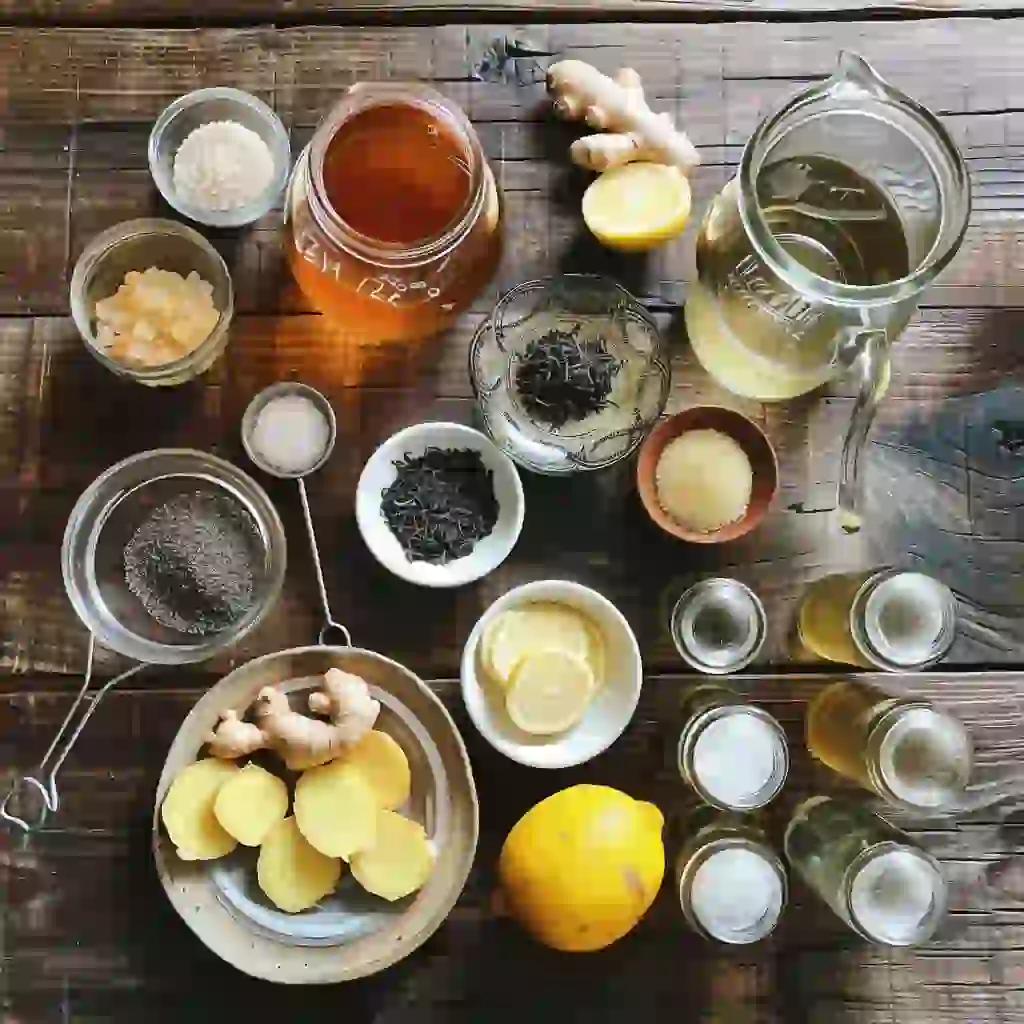
Sanitation is crucial. Always clean your hands, utensils, and jars thoroughly before starting. Since fermented tea involves live cultures, any unwanted bacteria can throw off the balance or even spoil your batch. I always place my jar in a warm, dark corner of the kitchen away from direct sunlight. Cover it with a breathable cloth secured by a rubber band to keep pests out while allowing air in.
Basic homemade kombucha and pu-erh-style tea methods
For a basic kombucha, brew a strong pot of black or green tea and dissolve sugar into it while it’s still hot. Once it cools to room temperature, pour it into your fermentation jar and add the SCOBY with some starter tea from a previous batch or a store-bought bottle. Let it sit for 7–10 days, tasting every couple of days until it reaches your desired tanginess. The result? A sparkling, slightly sour fermented tea that’s rich with personality.
For something different, you might try aging loose-leaf pu-erh in a cool, dark place. Unlike kombucha, it’s a dry fermentation and doesn’t require a SCOBY. This type of fermented tea slowly develops deeper, richer flavors over months or even years. I have a small stash aging in a clay container, and every cup I brew tastes a little more layered than the last.
Curious about other fermented wonders? Don’t miss our honest FGO tea review—a great example of how commercial teas can still offer that earthy, time-crafted feel.
Is Fermented Tea Good for You? My Personal Experience
When I first started drinking fermented tea, it was purely out of curiosity. I wasn’t trying to fix anything—just exploring new flavors. But after a few weeks, I began noticing subtle shifts. I felt less bloated after meals, and I didn’t experience that usual mid-afternoon crash. Was it the probiotics? The antioxidants? Maybe it was just hydration. Whatever it was, fermented tea became part of my rhythm.
One of the things I enjoy most about fermented tea is how adaptable it is. Some days, I crave the bold tartness of kombucha. Other days, a mellow aged pu-erh hits just right. I especially appreciate how it feels lighter than many sugary drinks while still satisfying. There’s a kind of grounded energy it brings—a bit of fizz, a touch of bite, and a whole lot of depth.
That said, I always recommend going slow if you’re new to it. When I introduced fermented tea into my routine, I started with small servings—just a few ounces with lunch or dinner. It gave my body time to adjust, and I was able to track how it made me feel. For some people, the acidity or live cultures might take a little getting used to.
Now, it’s one of those things I reach for instinctively. Whether it’s a homemade brew or a trusted brand, fermented tea has earned its place in my fridge. It’s not about trends or fads—it’s about how it fits into my lifestyle, supporting wellness in a quiet, natural way.
Risks and Considerations
When I first offered my homemade fermented tea to a friend, she loved the taste but felt a little uneasy afterward. That’s when I realized that while fermented tea has its charm, it’s not for everyone. Like anything involving live cultures and acidity, moderation and mindfulness matter.
One of the main concerns with fermented tea is cleanliness during preparation. If equipment isn’t properly sanitized, harmful bacteria can sneak in. I remember one batch I made during a humid summer—despite doing everything right, a strange film developed on top. I tossed the whole jar. Safety always comes first, especially when working with fermentation.
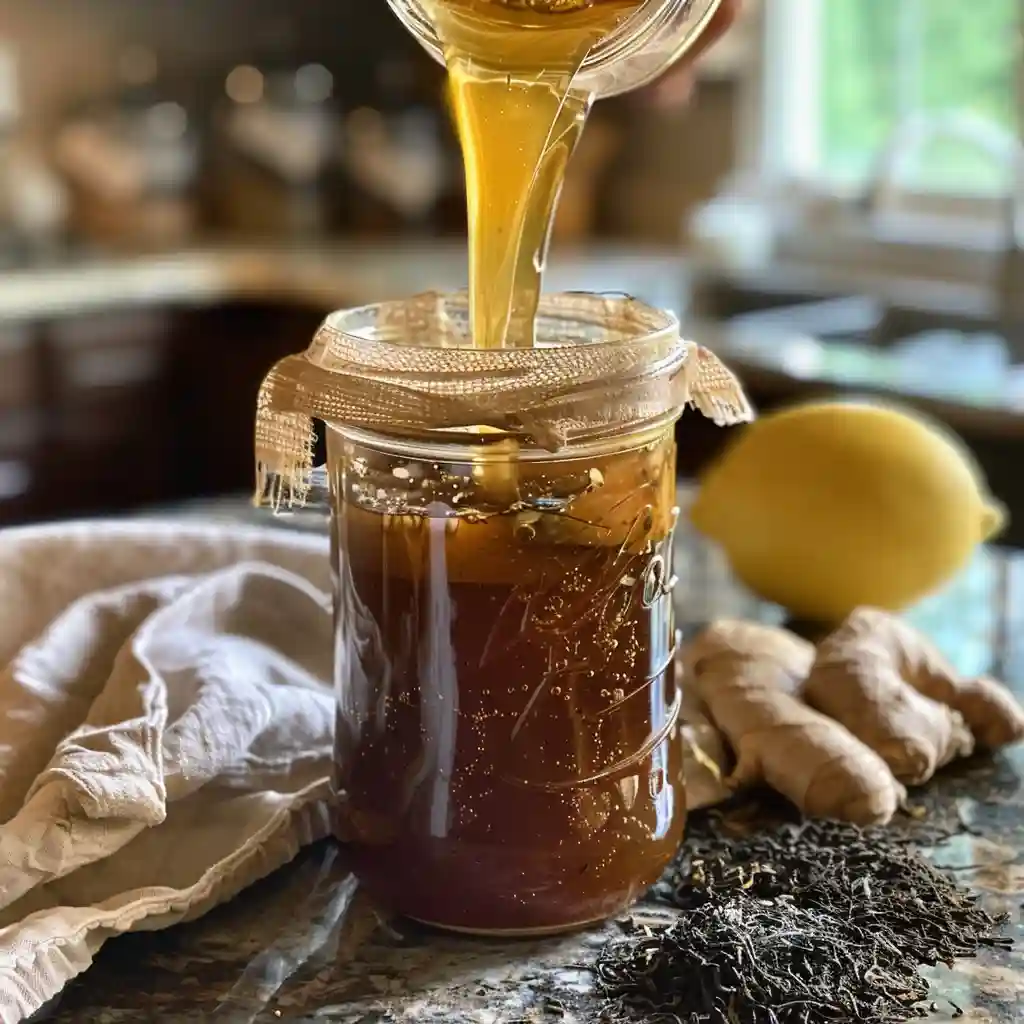
People with compromised immune systems or those who are pregnant may want to talk with a healthcare professional before drinking fermented tea regularly. And while kombucha is often marketed as a health drink, its acidity and trace alcohol content can cause discomfort in some cases. I’ve learned to listen to my body. If I drink it on an empty stomach, I sometimes get a sour feeling in my gut. Drinking it with meals works much better for me.
There’s also the caffeine factor. While fermented tea tends to have less caffeine than fresh-brewed tea, it’s still present—especially in black or oolong-based brews. That might be a concern for folks sensitive to stimulants. Over time, I’ve learned which brews keep me balanced and which to enjoy earlier in the day.
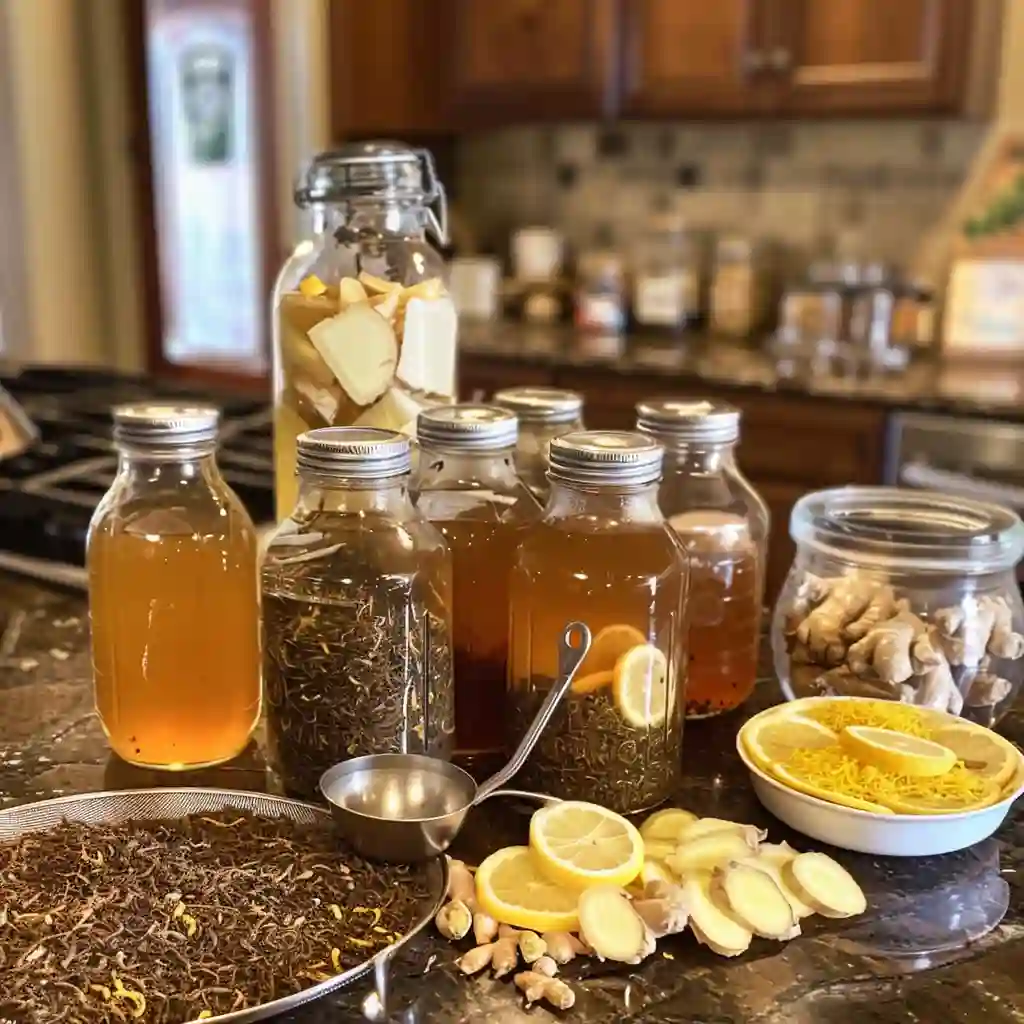
Ultimately, fermented tea is a living drink, and like all living things, it needs care and respect. Once I figured out what worked for my body, it became something I could enjoy daily—with no side effects, just satisfaction.
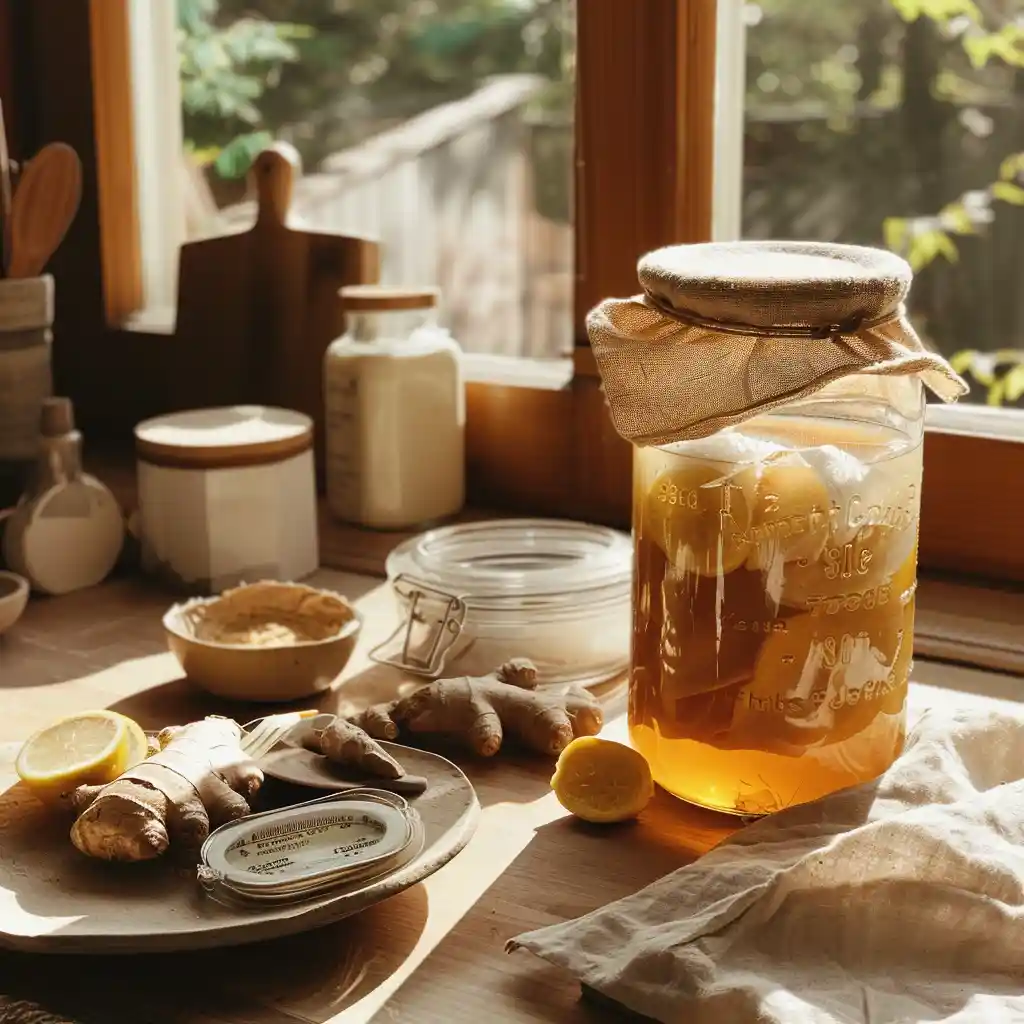
Fermented Tea vs. Other Tea Types
Before I got into fermented tea, I was all about classic green and black teas. I loved the simplicity—hot water, steep, sip. But once I discovered how fermentation transforms tea, I started comparing them in new ways. Each type brings something different to the table, and understanding those differences helped me decide when and why to enjoy each one.
The biggest difference lies in flavor. Traditional teas offer clean, sharp notes—grassy, floral, smoky. Fermented tea, on the other hand, is often tangy, earthy, or fizzy. Kombucha might remind you of a light cider, while pu-erh leans more like a forest floor after rain—deep, rich, and grounding. I love rotating between them depending on my mood.
Then there’s how they feel in the body. While all teas contain antioxidants, fermented tea may introduce probiotics and organic acids that regular teas lack. I don’t claim any miracles, but on days when my digestion feels off, I tend to reach for a bottle of homemade kombucha over anything else. It’s like a nudge for my gut to get back on track.
In terms of caffeine, fermented tea can be a gentler choice. Because the fermentation process often breaks down caffeine content, it tends to feel smoother than a strong cup of black tea. That said, green tea kombucha still gives a gentle lift when I need it—without the jitters I sometimes get from coffee or espresso.
For a flavorful twist, check out our fermented garlic honey recipe. It’s not tea, but it follows similar natural fermentation techniques and pairs beautifully with a hot cup of tea in the morning.
Whether you’re a fan of crisp sencha or bold English breakfast, adding fermented tea to the mix opens up a new world of textures, flavors, and experiences.
Best Fermented Tea Brands and Where to Buy
When I don’t have time to brew my own, I rely on a few trusted brands to keep my fridge stocked with quality fermented tea. Over the years, I’ve sampled dozens—some too vinegary, others overly sweet. But a handful really stood out for flavor, consistency, and that unmistakable live-culture fizz.
GT’s Kombucha is a household name for a reason. Their “Trilogy” flavor—zesty with hints of berry and ginger—was one of my first fermented teas, and it remains a favorite. Another top contender is Health-Ade, especially their Pink Lady Apple variety. It’s light, crisp, and strikes a nice balance between tangy and smooth.
For those into traditional aged teas, I highly recommend exploring Numi Organic’s Pu-erh collection. Their fermented tea bricks are authentic and easy to prepare. I steep a small chunk in hot water and let it brew until it reaches that earthy depth I’ve come to love.
You can find most of these brands at local health stores, Whole Foods, or even online retailers. If you’re looking to try fermented teas with a functional twist, some newer brands like Humm and Brew Dr. are offering botanical blends that bring herbs, spices, and adaptogens into the mix.
What I look for is simple: real ingredients, a visible culture or sediment (which often signals it’s truly alive), and no artificial flavors. A good fermented tea should feel vibrant in taste and texture.
Don’t miss our probiotic soda recipe if you’re curious about crafting functional drinks with similar benefits. It’s a playful way to enjoy probiotics without traditional tea.
Whether you’re buying bottled kombucha or ordering aged pu-erh bricks online, there’s never been a better time to discover the world of fermented tea.
Frequently Asked Questions About Fermented Tea
What is a fermented tea called?
A fermented tea can go by many names depending on the style and region. The most common examples are kombucha, pu-erh, and jun. Each has its own preparation method, but what unites them is the fermentation process, where beneficial microbes transform the tea into a living, flavorful beverage. So, whether you’re sipping a fizzy kombucha or a rich, earthy pu-erh, you’re enjoying a type of fermented tea.
Fermenting tea not only enhances taste but also turns your daily sip into a tradition steeped in history and health.
Conclusion: Fermented Tea Is a Living Tradition Worth Sipping
If there’s one thing I’ve learned in my journey with fermented tea, it’s that it’s not just a drink—it’s a tradition. It connects cultures, generations, and even kitchens. From that first fizzy bottle of kombucha I picked up at a farmers market to the quiet moments steeping aged pu-erh at home, fermented tea has become part of my life.
I love that fermented tea adapts to your lifestyle. Whether you brew it yourself or grab a chilled bottle from the store, you’re embracing something that’s alive, evolving, and rooted in history. It’s one of the few drinks I know that offers both flavor and function, without feeling overly processed or trendy. It’s simple, but it carries depth.
If you’re just getting started, my advice is to taste widely and brew slowly. Not every fermented tea will be your favorite—and that’s okay. The magic is in the experimentation, the tinkering, the unexpected delight when a new batch turns out just right.
Don’t miss our fermented probiotic lemonade guide for a bright and zesty option, or visit my Facebook page and Pinterest board where I share fresh brews, stories, and experiments.
To me, fermented tea is more than a beverage—it’s a daily ritual that reminds me to slow down, listen to my body, and enjoy the process.
